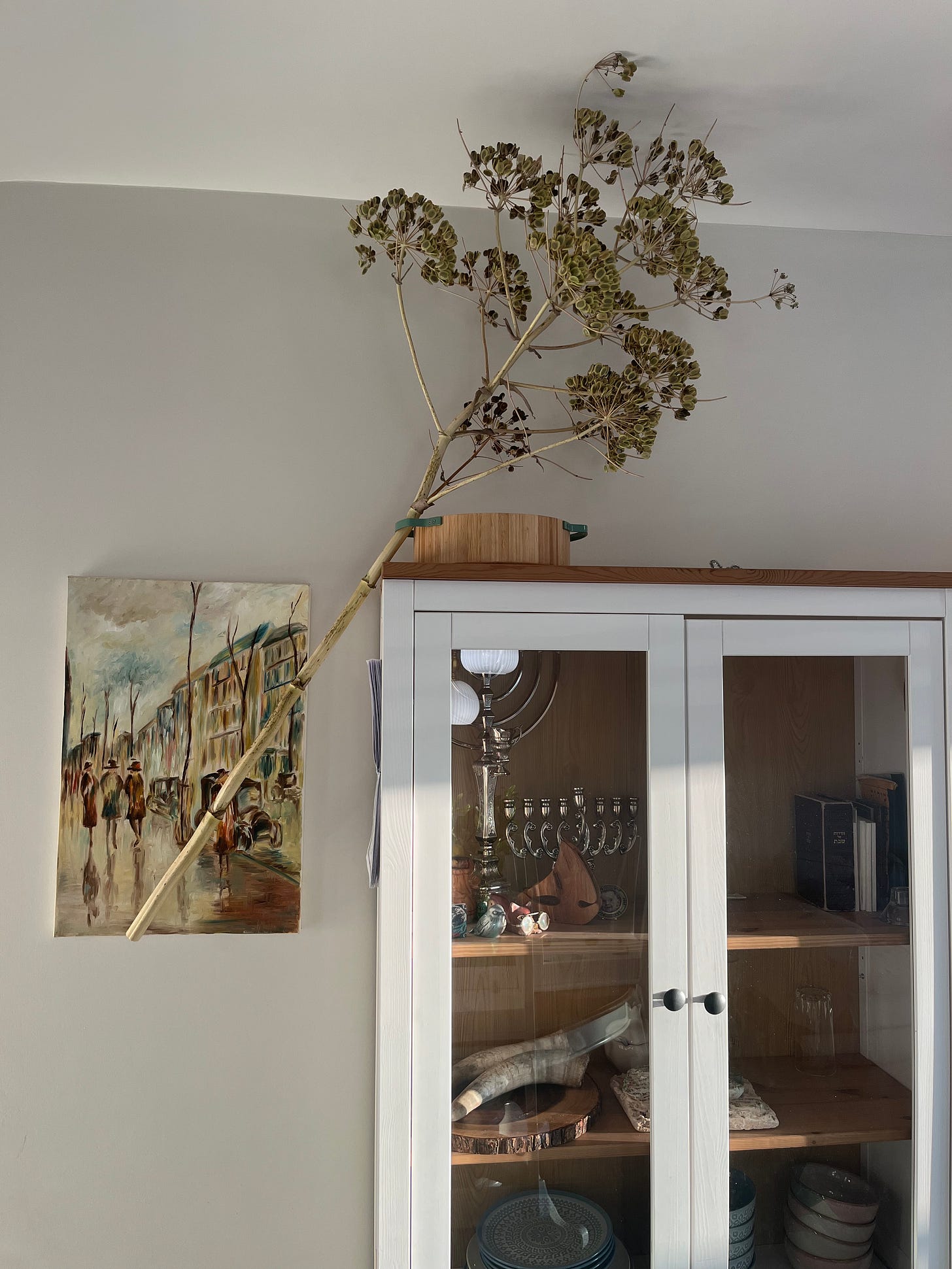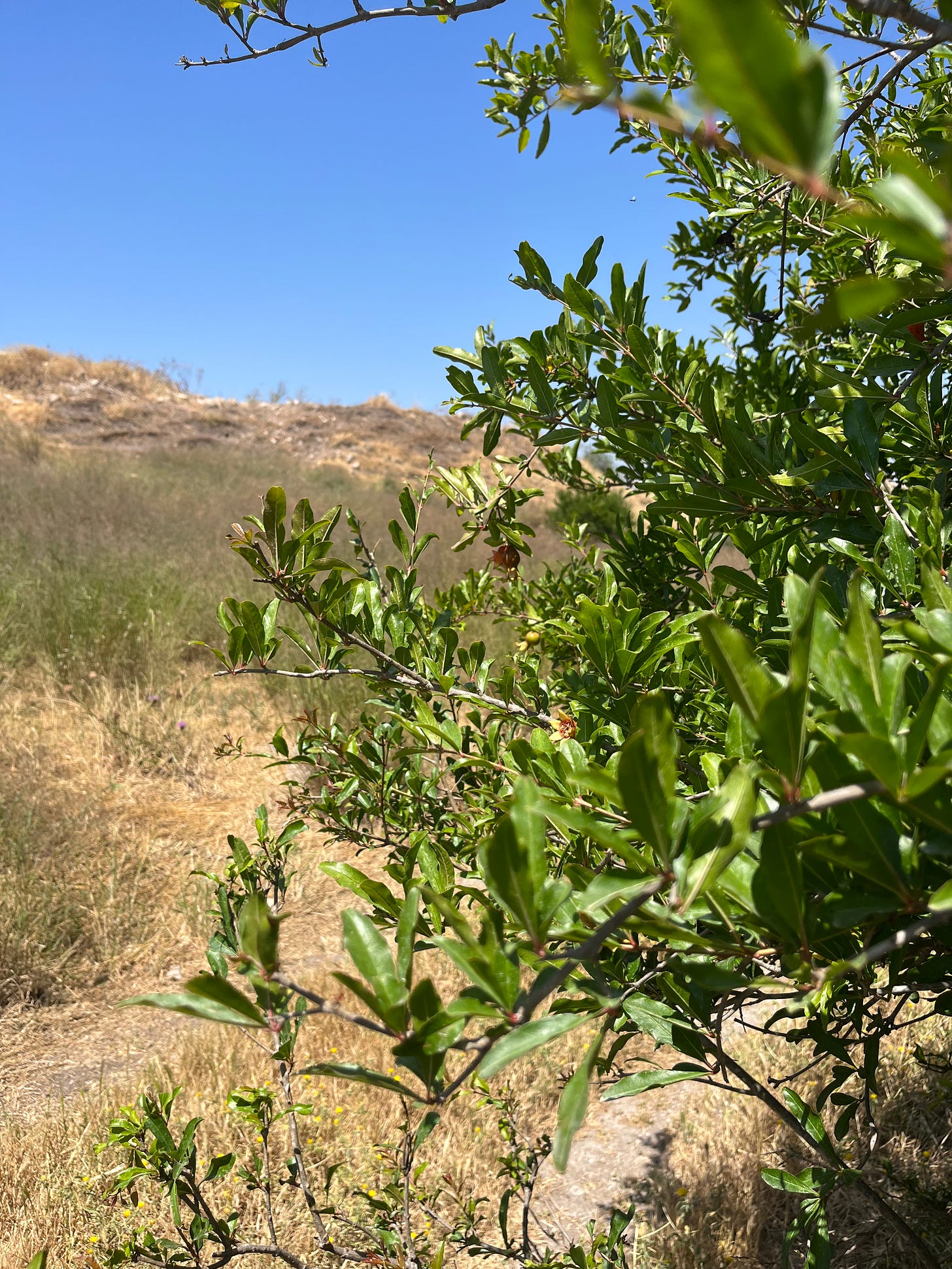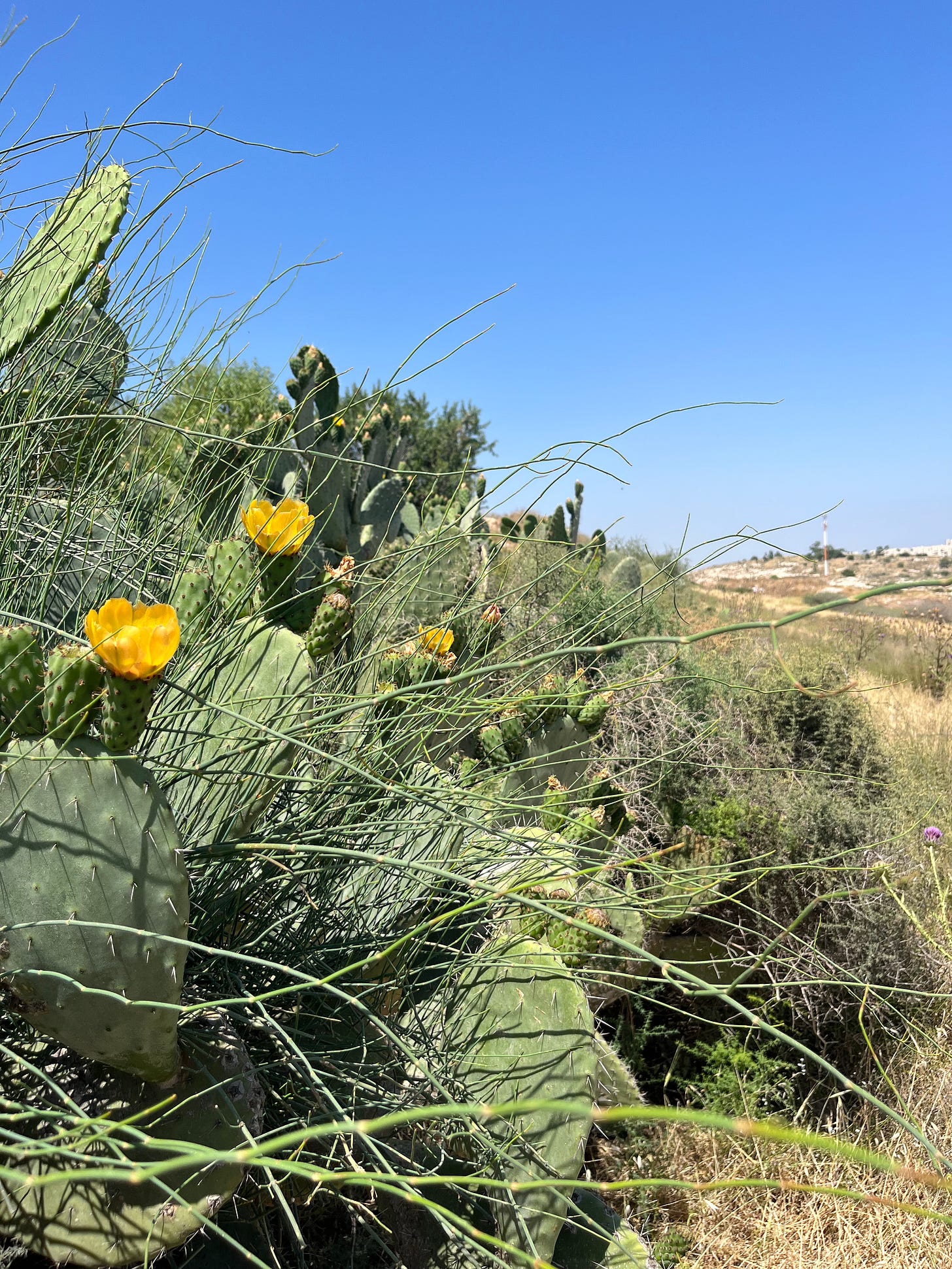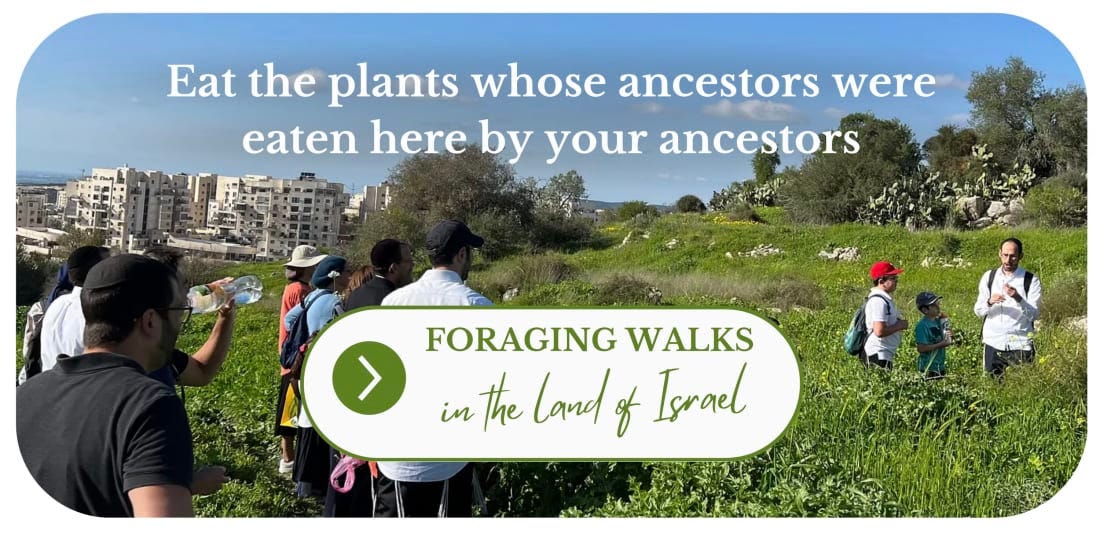Foraging and Friends
The Land of Israel's lessons on identifying plants and relationships.
Dear Healthy Jew,
Foraging for food in nature is safe and dangerous. Foraging is safe because the natural world is safe, and it’s dangerous because the natural world is dangerous. Both safe and dangerous, the natural world and its plants tell the secret of finding wellness: life is complicated, not without risks, but if you’re informed and attentive, you’ll surely find your way.
Wild Carrot

Take wild carrot, a great example of foraging’s challenges and opportunities that I like to point out right in the beginning of foraging walks. This upiquitous plant pops up all over Israel every spring; its leaves and flowering heads are edible and nutritious, and taste, believe it or not, like a carrot. (It’s hard to grab the root at exactly the right time, when it’s not too small but not yet dried out.)
But before you start munching on carrot-flower-heads, beware that not all nice white flowers were created equal. The wild carrot has many inedible cousins roaming the countryside these days, even some poisonous ones. One of them, hemlock, is from the most lethal plants around. Tradition has it that Socrates was put to death for his heretical philosophical views by being forced to drink hemlock juice.
Therefore, I usually suggest leaving the wild carrot alone, unless you know her well. Imagine two sisters that you’ve just met, say, on a foraging walk. If you meet them next week on the street, you might easily get them mixed up. But would you confuse your own two sisters? Of course not. The difference isn’t that you have an itemized list of features for each of them, but simply because you know them. That’s the way I want to know wild plants before I gather them. Individual signs are crucial when getting to know a plant, but at some point, often after identifying the plant dozens of times, I come to just know it.
This is foraging’s first message for life. The world is a container that holds widely diverse personalities, some friendly and helpful, others boring and benign, and still others maliciously evil. Therefore, says nature, don’t be awestruck, overwhelmed, repulsed, or terrified from the goodness or badness of individuals. The entire kaleidoscope of possibilities already sits right outside your door, firmly grounded in the earth by trunk and stem.
Learn to discern between what works for you and what doesn’t, which relationships are nourishing and which are toxic. Take what you like, and let the rest be. You don’t need to change the world, neither by uprooting all hemlock nor by destroying (or changing) everybody you don’t like.
Wild Fennel
Yet we don’t need to begin the journey by analyzing the minute differences between the carrots and hemlocks of the world, plant or human.
A better place to start is with wild fennel, one of my favorite foragible plants. Foragers don’t go for the bulb that’s sold in stores, because in nature it’s much smaller and harder. Instead, we begin already in late winter when the thread-like leaves start shooting up. They look like dill, and smell and taste like dill, with a hint of anise. Everyone knows about the nutritional benefits of green leaves; when they grow in nature everything is compounded by the rich soil and biodiverse surroundings. It’s like organic, times ten.
Then, from early summer to late fall, in an unusually long season, wild fennel shares its unique treasures: first flowers, then seeds, both of which make a delicious tea, not at all bitter, even slightly oily, almost like vegetable broth.
If you make it right, that is. Pour just-boiled water on a fistful of flowers or seeds, immediately cover, and wait 15 minutes before drinking.
Besides food and tea, fennel seeds have also been used for centuries as a medicinal herb for all sorts of digestive issues, ranging from colic to constipation, and also, most specifically, flatulence. I hear that any respectable restaurant in India will serve fennel seeds at the end of a meal.
We don’t need to suffer to benefit from fennel flowers and seeds, because they are, just like many plants in nature, an extremely nutritious food. Except for pregnant women, that is, who should stay away, because fennel is also a phytoestrogen. But fennel is fine for nursing mothers; in fact, it’s also traditional remedy to increase lactation.
Yet fennel too comes with its dangerous cousins. Besides the dreadful hemlock – although more easily mistaken for wild carrot, it’s also somewhat fennel-like – there is very similar plant called giant fennel which is not just more giant than regular fennel but also slightly poisonous. It’s used as a medicinal herb in small quantities, but I wouldn’t try it for fun. And my shepherd friends tell me it’s highly toxic for their goats and sheep, which is why they make sure you won’t find much of it in the local Bedouin grazing grounds.

But fennel is still every forager’s friend, because the right plant has its name written all over. Not in lifeless person-words, mind you, but in vibrant plant language. Whenever you’re not sure if the plant is friendly fennel or a fiendish foe, just roll some seeds or leaves in your fingers and smell. If it’s fennel, the unmistakable aromas of anise, dill, and licorice will be the plant’s call for you to enjoy it in wellness. If not, leave the poor thing alone.
Cactus Flowers and Bristly Hollyhock
As dry summer heats up here in Israel, most of the flowers and other spring plants disappear from the landscape. Until the late-summer wild fruits ripen in September, foraging is somewhat scarce. But there’s always something. In addition to the trusty fennel, here are two other common early-summer flowers worth knowing about. (And there are many more…)

Cactuses, or sabras in Hebrew, grow in the countryside all over Israel. Ironically enough, although native Israelis are nicknamed sabras, the cactus isn’t a native of Israel. The plant originates from Mexico, and was apparently brought to the Old World by Spanish conquistadors in the 16th century. But they’ve been around Israel for over 400 years by now, so they’re not some random intruder.
Because the Middle East isn’t their natural habitat, they mostly grow where they were once planted by people. For that reason, they are most commonly found in or around old towns and villages.
How to harvest the delicious fruits without being brutally stabbed is a story for when they ripen in early fall. Now we go for the yellow or orange cactus flowers, while being careful to avoid the thorns around them (but not on them!). They taste great, nectar-like and slightly sweet.

If you’ve been in Israel in May or June, you’ve surely met those huge purple towers of flowers popping up all over, most commonly patrolling on the sides of roads. I don’t know why, but they seem to especially love intersections. Bristly hollyhock, they’re called. Unlike many other wild flowers, this plant is unprotected and legal to forage (except when planted by the municipality, of course), so enjoy it both in your vase and your plate.
The natural world, just like human society, is full of choices and opportunities. The path to health, wholeness, and happiness is to learn, look, listen, and smell.
Like everything published in Healthy Jew, this article is for informational and educational purposes only. Talk to a qualified professional – or, even better, join a guided foraging walk - before taking any action or substance that you read about here.
Thank you for reading Healthy Jew.
Here are 2 great paths to continue the journey:
Also check out this intro and index to explore hundreds of posts about our 3 Healthy Jew topics: Wellness with Wisdom, Land of Life (Israel), and Sensible Spirituality.
Finally, always feel free to reach out here with any comments, questions, or complaints:
I look forward to hearing from you!
Be well,
Rabbi Shmuel Chaim Naiman
Please note: All content published on Healthy Jew is for informational and educational purposes only. Talk to a qualified professional before taking any action or substance that you read about here.










